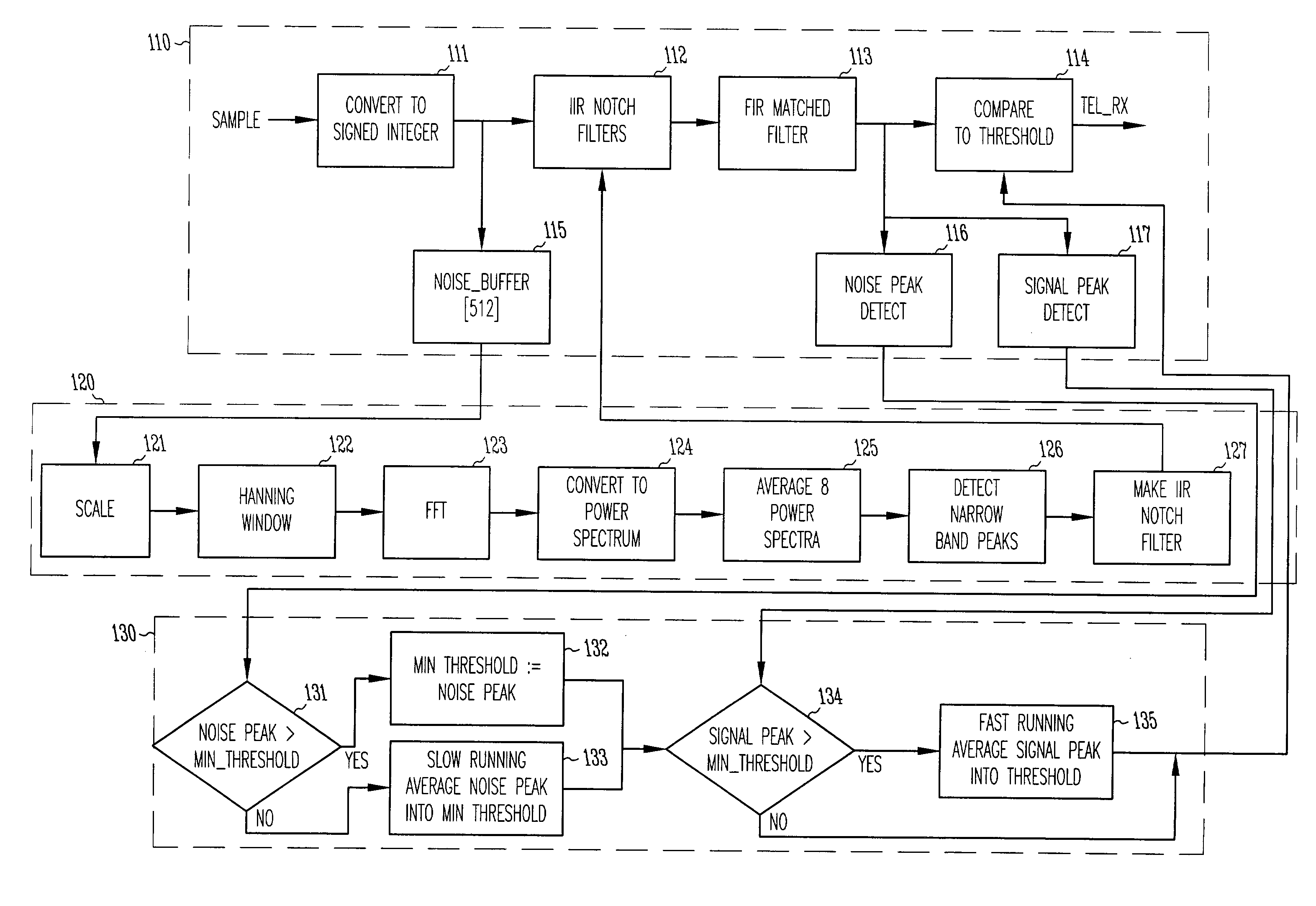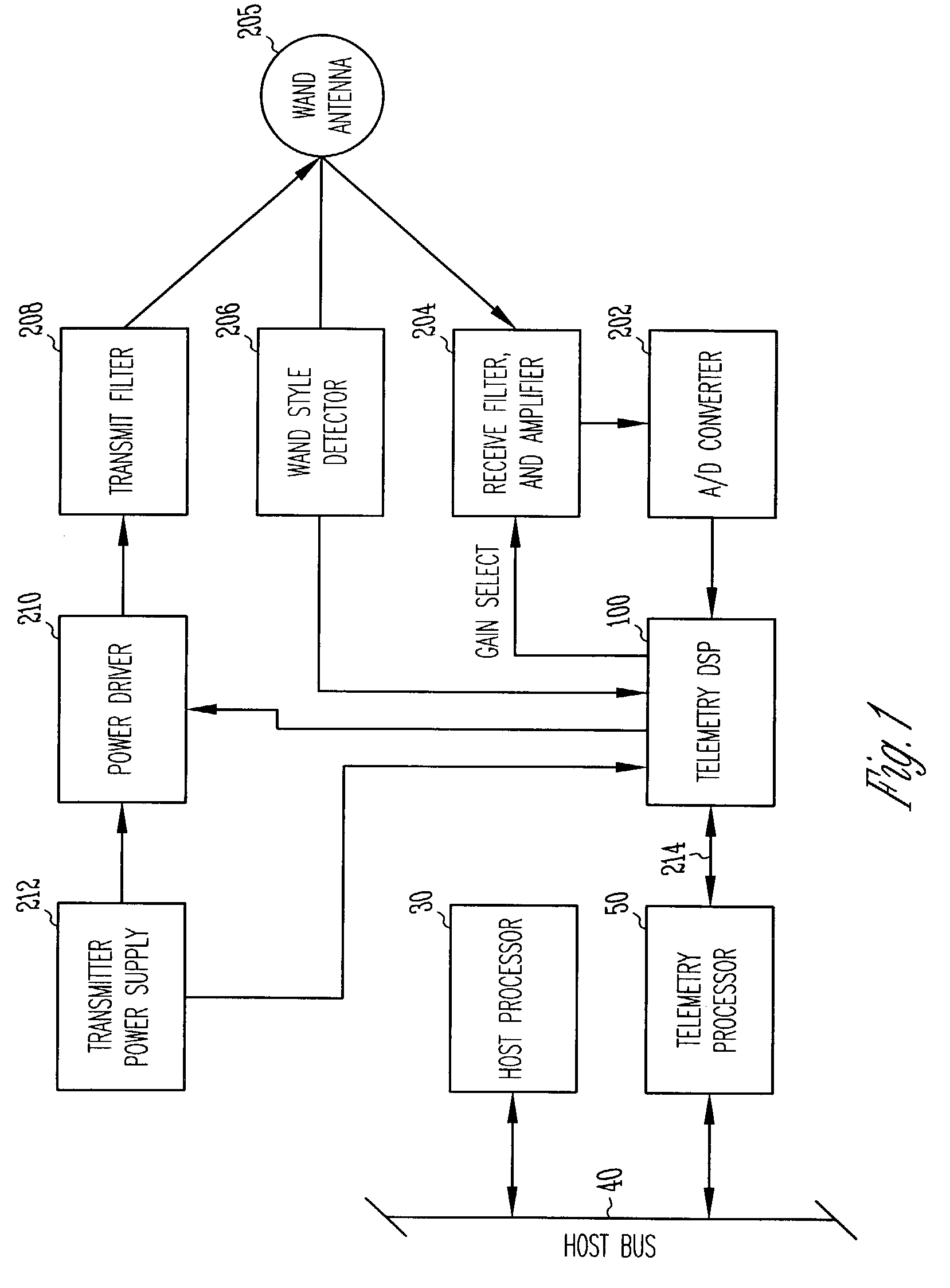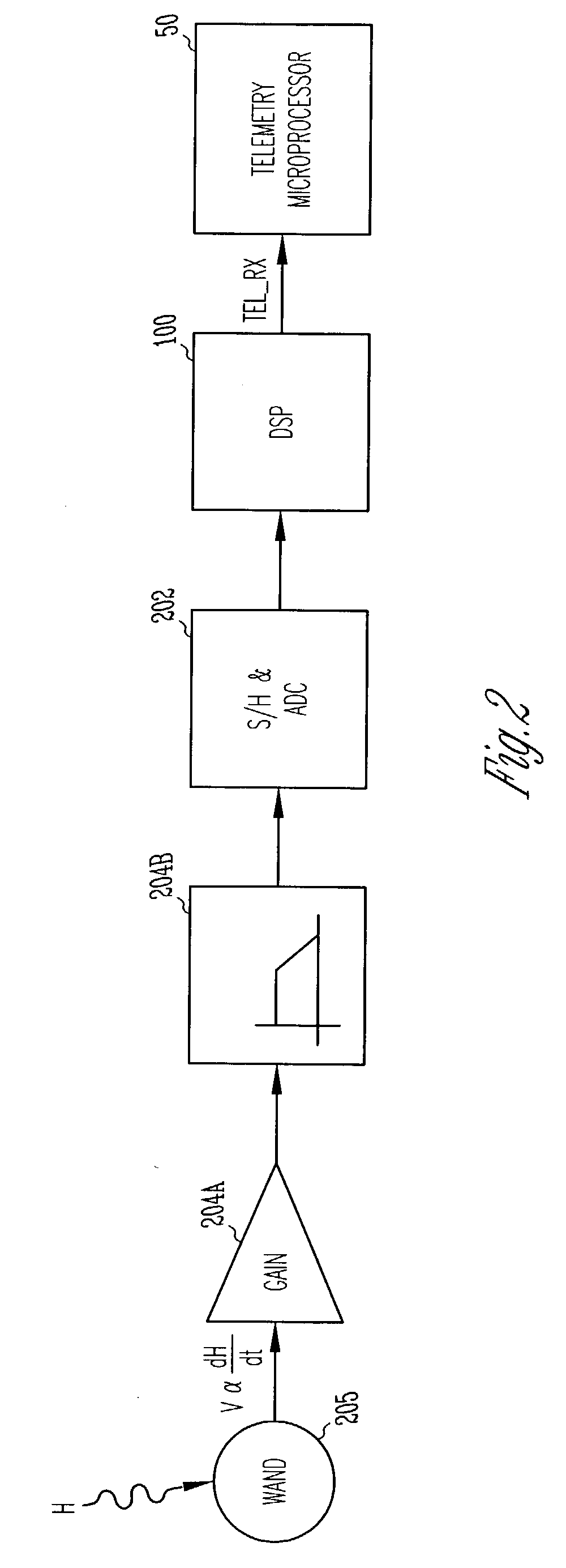System and method for receiving telemetry data from an implantable medical device
a medical device and telemetry technology, applied in the field of implantable medical devices, can solve the problems of inability to receive data in relatively quiet environments, and inability to meet the needs of external programmers
- Summary
- Abstract
- Description
- Claims
- Application Information
AI Technical Summary
Benefits of technology
Problems solved by technology
Method used
Image
Examples
Embodiment Construction
[0010]Telemetry systems for implantable medical devices utilize radio-frequency energy to enable bidirectional communication between the implantable device and an external programmer. An exemplary telemetry system for an external programmer and a cardiac pacemaker is described in U.S. Pat. No. 4,562,841, issued to Brockway et al. and assigned to Cardiac Pacemakers, Inc., the disclosure of which is hereby incorporated by reference. A radio-frequency carrier is modulated with digital information, typically by amplitude shift keying where the presence or absence of pulses in the signal constitute binary symbols or bits. The external programmer transmits and receives the radio signal with an antenna incorporated into a wand which can be positioned in proximity to the implanted device. The implantable device generates and receives the radio signal by means of an antenna, such as may be formed by a wire coil wrapped around the periphery of the inside of the device casing. As aforesaid, th...
PUM
 Login to View More
Login to View More Abstract
Description
Claims
Application Information
 Login to View More
Login to View More - R&D
- Intellectual Property
- Life Sciences
- Materials
- Tech Scout
- Unparalleled Data Quality
- Higher Quality Content
- 60% Fewer Hallucinations
Browse by: Latest US Patents, China's latest patents, Technical Efficacy Thesaurus, Application Domain, Technology Topic, Popular Technical Reports.
© 2025 PatSnap. All rights reserved.Legal|Privacy policy|Modern Slavery Act Transparency Statement|Sitemap|About US| Contact US: help@patsnap.com



